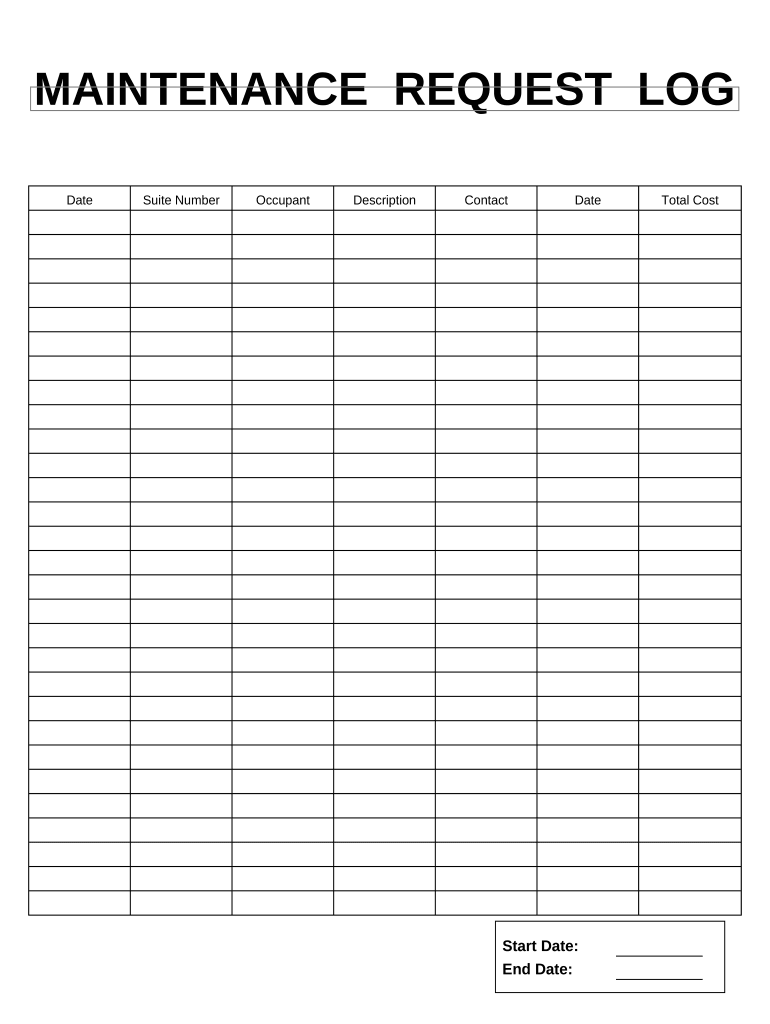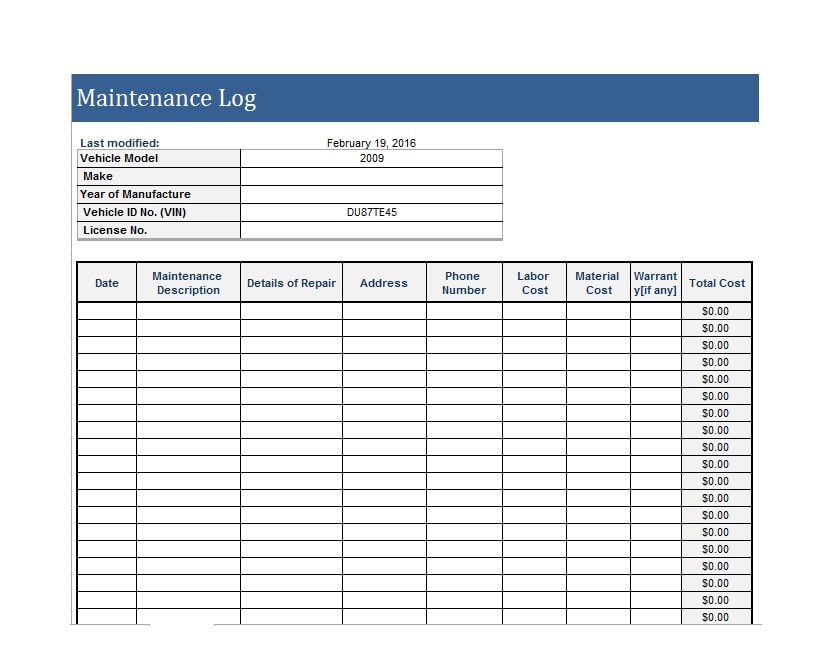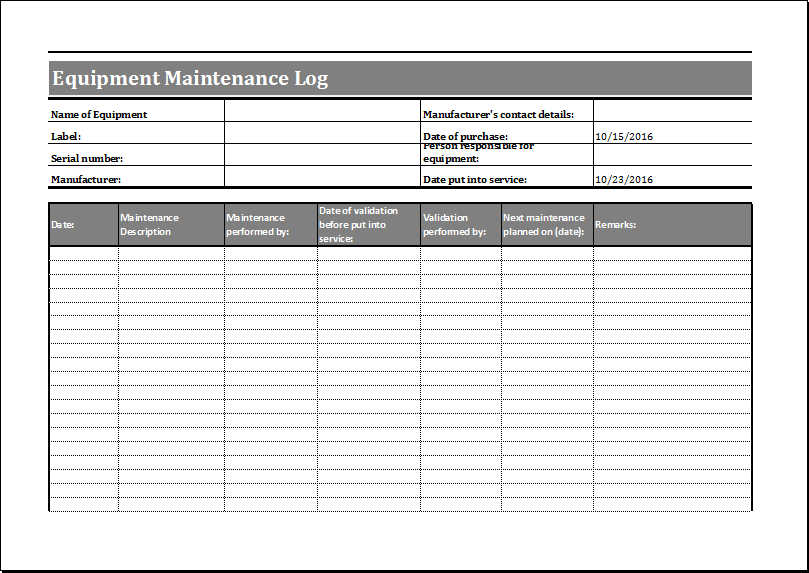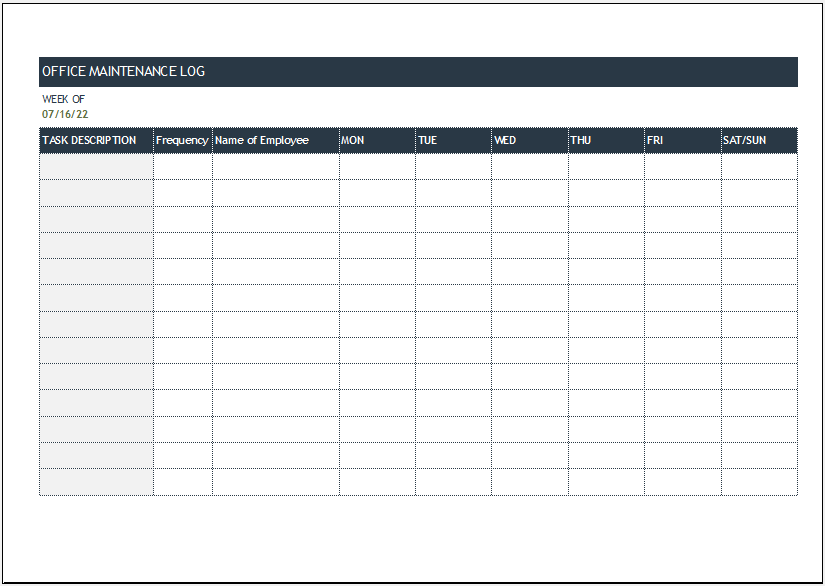Maintaining a well-functioning office requires regular upkeep and maintenance of its equipment and facilities. From servicing computers and printers to repairing plumbing and electrical systems, keeping track of all maintenance activities is essential to ensure the smooth operation of the office.
An office maintenance log provides a practical solution to track and document these activities, making it easier to assess the maintenance needs, allocate resources, and maintain a safe and efficient work environment.
What is an Office Maintenance Log?
A office maintenance log is a document used to record and track all maintenance activities performed on the equipment and facilities in an office. It serves as a centralized record that documents each maintenance task, including the date, time, description of the activity, and the person responsible for performing it.
The log can be customized to include specific equipment or areas of the office, ensuring comprehensive documentation of all maintenance tasks.

Why Use an Office Maintenance Log?
Using an office maintenance log offers several benefits for both small and large offices:
- Organization and Efficiency: A maintenance log helps keep track of all maintenance activities in one place, making it easier to stay organized and efficient in managing the office’s maintenance needs.
- Preventive Maintenance: By documenting regular maintenance tasks, such as equipment inspections and servicing, a maintenance log helps identify patterns and schedule preventive maintenance to avoid costly breakdowns or repairs.
- Compliance and Safety: A well-maintained office ensures compliance with safety regulations and reduces the risk of accidents or injuries. A maintenance log provides a record of all safety-related maintenance activities, such as fire extinguisher inspections or emergency exit checks.
- Resource Allocation: By tracking maintenance activities, a maintenance log helps identify areas that require more attention or investment. This allows for better resource allocation, whether it’s repairing faulty equipment or upgrading outdated systems.
- Historical Documentation: A maintenance log serves as a historical record of maintenance activities, which can be useful for future reference, warranty claims, or audits.
How to Create an Office Maintenance Log
Creating an office maintenance log is a straightforward process that can be customized to suit the specific needs of your office. Here are the steps to create one:
- Identify the Maintenance Categories: Determine the different categories of maintenance activities you want to track, such as equipment maintenance, facility repairs, or safety inspections.
- Create a Template: Design a log template using a spreadsheet or word processing software. Include columns for the date, time, description of the activity, and the person responsible.
- Add Equipment or Facility Details: Customize the log template by adding specific equipment or facility details, such as serial numbers, locations, or maintenance schedules.
- Print and Distribute: Print multiple copies of the log template and distribute them to relevant staff members who will be responsible for documenting maintenance activities.
- Implement Documentation Procedures: Establish clear procedures for filling out the maintenance log, including guidelines on what information to include and when to update the log.
- Regularly Review and Update: Set a schedule for reviewing and updating the maintenance log to ensure it remains accurate and up to date. This can be done weekly, monthly, or based on the frequency of maintenance tasks.
Examples of Office Maintenance Logs
Here are a few examples of how an office maintenance log can be customized to suit different office needs:




Tips for Successful Office Maintenance Log Management
Managing an office maintenance log effectively requires attention to detail and discipline. Here are some tips to ensure successful log management:
- Assign Responsibilities: Assign responsibilities to specific staff members for documenting and updating the maintenance log.
- Standardize Terminology: Use consistent terminology and descriptions for maintenance tasks to avoid confusion and ensure accurate documentation.
- Set Reminders: Use reminders or calendar notifications to prompt staff members to update the maintenance log regularly.
- Regularly Audit the Log: Conduct periodic audits of the maintenance log to identify any gaps or inconsistencies and address them promptly.
- Train Staff: Provide training to staff members on how to properly fill out the maintenance log and the importance of accurate documentation.
- Integrate Digital Solutions: Consider using digital tools or software that automate the maintenance log process, making it easier to track and manage maintenance activities.
Conclusion
An office maintenance log is a valuable tool for tracking and documenting all maintenance activities performed on equipment and facilities in an office. It helps maintain organization, efficiency, and compliance while ensuring the safety and smooth operation of the office.
By following the steps to create a maintenance log and implementing effective management practices, offices can benefit from improved maintenance planning, resource allocation, and historical documentation. Start using an office maintenance log today to streamline your office maintenance processes and enhance overall productivity.
Office Maintenance Log Template – Download